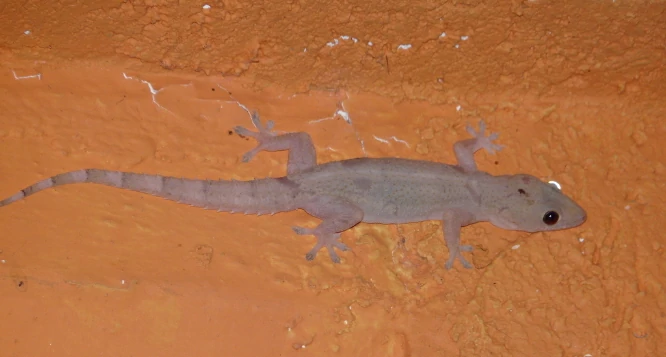If you’ve ever kept a pair of house geckos long enough, you might have noticed them doing something curious. A little chasing, some chirping, and then suddenly they disappear into a corner or under a rock.
A few weeks later, you might find two tiny white eggs stuck to the wall or tucked behind a decoration. That’s when it hits you. Your geckos might actually be breeding.
But then you start to wonder, is it really that easy to breed house geckos, or is there more to it than it seems?
Yes, House geckos are relatively easy to breed, but only if their environment feels right to them. They’ll mate and lay eggs regularly when they have steady warmth, humidity, hiding spots, and good food. In captivity, it can seem effortless once you’ve set up the right conditions, but getting there takes some careful attention.
For many people, breeding starts almost by accident. You bring home two geckos, thinking they’ll just be roommates, and before you know it, you’ve got a clutch of eggs glued to the wall of their enclosure.
They’re not picky about romance, but house geckos are particular about their surroundings. The “easy” part only happens once you’ve nailed their comfort zone.
How House Geckos Naturally Breed in the Wild
In the wild, house geckos breed year-round in warm, humid regions, especially near homes and lights where insects gather.
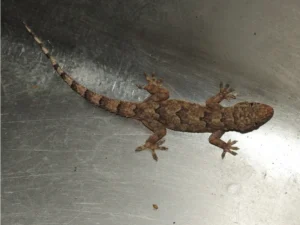
They breed whenever the weather and food supply allow it. In tropical areas, females can lay several clutches a year, sometimes as many as 8 to 10.
They don’t build nests like birds or burrow like some lizards. Instead, a female finds a safe spot behind bark, under eaves, or inside cracks in walls and sticks her two eggs there.
The shells harden quickly, almost like tiny white pebbles. Once that happens, not even the mother can move them.
This simple, self-sufficient approach is part of why house geckos thrive so easily. They don’t need a lot of fuss.
They just need the basics: warmth, humidity, and safety.
Creating the Right Breeding Setup at Home
If you want your house geckos to breed, the most important step is setting up their space correctly. It’s not complicated, but it has to feel right for them.
- Temperature: Keep it around 28–32°C (82–90°F) during the day and a few degrees cooler at night.
- Humidity: Around 60–80% is ideal. Mist lightly once or twice a day so they stay hydrated but not soaked.
- Lighting: A simple day-night cycle helps. Natural room light or a gentle UVB bulb for 10–12 hours a day works fine.
- Hiding spots: Add pieces of bark, rocks, and fake plants. Geckos love having corners where they feel safe.
- Food: Crickets, mealworms, and small roaches are perfect. Dust them with calcium and vitamins to keep both adults and babies healthy.
Once they’re comfortable, breeding often happens naturally. You might not even notice until eggs appear.
How to Tell When Your Geckos Are Ready to Breed
Geckos don’t follow a fixed schedule, but you can spot some clear signs. A healthy adult female should be around 8 to 10 months old, with a well-rounded belly and good energy.
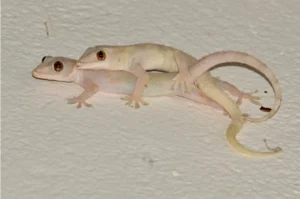
Males are usually slightly larger and more vocal. They’ll chirp, bob their heads, and sometimes chase the female as part of courtship.
If you notice the male’s tail twitching and gentle chasing behavior, it’s often a sign he’s trying to mate.
This can look a bit intense, but it’s normal as long as the female isn’t getting hurt or stressed.
You can tell breeding was successful when the female’s belly starts showing small white ovals (the forming eggs).
Within a few weeks, she’ll find a spot to glue them to and leave them alone.
Egg-Laying and Incubation
When a female is ready to lay eggs, she usually picks a quiet, hidden corner. You might notice her acting restless, digging or exploring a lot before she finally chooses her spot.

She lays two eggs per clutch, though sometimes one if she’s younger or smaller.
Once the eggs are out, don’t try to move them. They harden within hours and can crack easily if handled.
If you need to collect them, it’s best to move the whole piece of décor they’re stuck to.
In warm, humid conditions, the eggs usually hatch in about 45 to 60 days. Temperature affects the timing. Warmer spots speed it up, cooler ones slow it down.
If the temperature stays steady around 30°C (86°F), you’ll often see tiny hatchlings in about 6 weeks.
Taking Care of the Hatchlings
Hatchlings are tiny (barely an inch long) but they start exploring and hunting right away. The first thing you’ll notice is how delicate they look, like tiny versions of their parents.
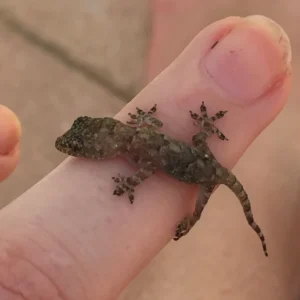
They can’t eat large insects yet, so give them pinhead crickets or small fruit flies.
Keep the humidity slightly higher, around 75–80%, to help them shed properly.
You can house them in a smaller container at first, with paper towel on the bottom for easy cleaning and small pieces of bark or leaves for hiding.
Within a few weeks, you’ll start to see them grow bolder. It’s always fun to watch them chase their first insects.
It’s like watching little lightning bolts dart across the enclosure.
Common Problems When Breeding House Geckos
Even though house geckos breed easily once they’re settled, there are a few things that can go wrong:
-
Eggs drying out: If humidity is too low, eggs can shrink or collapse. Regular misting helps prevent that.
-
Fungal growth: Too much moisture can cause mold, which damages eggs. Proper airflow helps balance humidity.
-
Calcium deficiency: Females need extra calcium to produce eggshells. Without it, they can get weak or develop soft eggs.
-
Aggression: Sometimes males get too pushy. If the female looks stressed or injured, separate them for a while.
These issues aren’t uncommon, but they’re usually easy to fix once you notice them.
How Often Do House Geckos Lay Eggs?
A single female can lay multiple clutches throughout the year, often every 4 to 6 weeks during the warmer months.
In ideal conditions, that means several pairs of eggs in a single season.
It’s not unusual for a healthy female to produce 8 to 10 clutches per year, especially if she’s well-fed and kept warm. Each time, she’ll lay the eggs in a familiar hiding place, sometimes even near her previous clutches.
Over time, you might find tiny eggs tucked behind decorations, stuck to glass, or hidden under rocks. It’s like a small treasure hunt each time.
What to Do If You Don’t Want Them to Breed
Sometimes breeding happens by accident, and you suddenly find yourself with more geckos than you planned for. If that’s the case, there are a few simple things you can do:
-
Keep males and females separate.
-
Lower the temperature slightly, around 25°C (77°F), to slow down breeding activity.
-
Collect and freeze any unwanted eggs before they develop, then dispose of them humanely.
Geckos don’t need to breed to stay healthy, so it’s perfectly fine to keep them solo or in same-sex groups.
Are House Geckos Good Breeding Pets for Beginners?
Yes, absolutely, as long as you understand their basic needs. They’re one of the easiest reptile species to breed because they’re hardy, active, and adaptable.
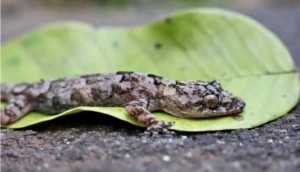
You don’t need fancy equipment or complicated care routines.
That’s why many beginner reptile keepers start with house geckos. They’re a great introduction to learning about reptile breeding, egg incubation, and hatchling care.
Plus, they’re active at night and fun to watch, especially when the lights go out and they start hunting.
Why Some Geckos Don’t Breed Even When Conditions Seem Right
Sometimes everything looks perfect. Right temperature, right humidity, good food, but your geckos still don’t breed. This usually happens for a few reasons:
-
They’re too young or old. Young geckos need time to mature; older ones may slow down naturally.
-
They’re stressed. Too much handling or noise can make them feel unsafe.
-
They don’t get along. Not every male and female pair is compatible.
-
Seasonal changes. Some geckos still respond to natural cycles, even indoors.
When that happens, patience is key. Give them time to feel secure and let nature take its course.
Why House Geckos Breed So Successfully
One reason house geckos have spread across so many countries is their incredible ability to breed and adapt.
They can live in cities, villages, forests, or even inside people’s homes.
Their eggs are resistant to drying out, their babies are independent from day one, and they thrive on almost any small insect. That’s why you’ll find them from Southeast Asia to Africa, and even across parts of the Americas.
They’re survivors, not because they’re aggressive or invasive by nature, but because they’re adaptable and persistent.
Conclusion
So, are house geckos easy to breed? Once their environment feels right (warm, humid, and safe) yes, they really are. T
he hardest part isn’t getting them to breed. It’s keeping up with how quickly they can do it.
They don’t need special tricks or complicated setups, just consistency and care.
Before you know it, you might look into your gecko’s tank and spot a pair of tiny eggs, knowing that you’ve created the perfect little world for them to thrive in.
For some keepers, that’s where the real joy starts. Not just watching their geckos live, but watching new ones hatch and grow.
It’s a reminder of how, with the right care, even the smallest creatures can turn a quiet corner of your home into a tiny, living ecosystem of their own.
Hi, my name is Ezra Mushala, i have been interested animals all my life. I am the main author and editor here at snakeinformer.com.

